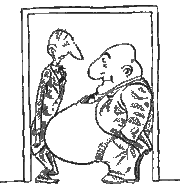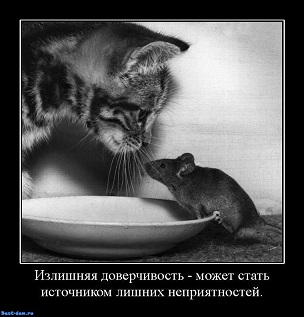Errors and errors startups in the protection of intellectual property. Patents
Introduction

Most of the startups are created by enthusiasts of their business, who don’t know and do not even think about protecting their intellectual property (IP). Very often in the future this leads to disastrous consequences. In this topic, I would like to consider the most common mistakes and how to avoid them.
Likbez
A patent is a security document certifying the exclusive right, authorship and priority of an invention, utility model or industrial design.
The invention as a technical solution is expressed in the combination of essential features sufficient to achieve the technical result provided by the invention.
Signs are significant if they affect the ability to obtain a technical result, i.e. are in causal connection with the specified result.
The technical result is a characteristic of the technical effect, phenomenon, properties, etc., objectively manifested in the implementation of the method or in the manufacture or use of the product, including when using the product obtained directly by the method embodying the invention.
The claims are intended to define the scope of legal protection provided by a patent and express the essence of the invention, i.e. contains a set of its essential features, sufficient to achieve the technical result specified by the applicant.
Errors
The first and most common mistake is the lack of protection.
Peter came up with a brilliant algorithm, which has no analogues yet. He furiously writes a prototype of the program and begins its commercialization in Russia. Makes a site, puts a demo, walks through exhibitions. Gaining momentum and entering the US market. And here the song begins ...
Situation 1. Suddenly (who would have thought!), A similar solution appears in a certain large company, which can spend money on advertising, and it looks more solid. In an unequal competition Petin startup goes to the bottom.
Situation 2. Petya's business goes uphill, and then good guys from the Evil Corporation come to him and report that Petya has violated 5 of their patents with their product. Ah ah ah. Petya parries them, saying that I don’t use any of your technologies. But, alas, theirs, the American judicial system in this case is on the side of evil, and Petya will have to prove that he is not a camel, having spent just (!!!) some miserable 2 or more million dollars for experts checking him decision, legal fees and other expenses. Petya is sinking. And for nothing, it is bought by the same corporation.

Decision
If Petya were not too lazy, built a patent strategy, patented his decision with several patents in the necessary countries, he could have avoided all this.
')
Error two - the disclosure of technical solutions

All the same Peter invents the same algorithm. But the first thing is going to the conference and everyone happily reports about it. Tells, shows, turns the slides visual. Explains his decision is available, so much so that even mid-level experts understand how everything works. Then someone invites him to patent the idea and enter the market. Peter sits over the application for a patent, does not sleep at night. Submits to the office and ... receives a refusal. His decision was included in the level of technology - i.e. it does not have a novelty, because already known from the conference materials. Epic fail. Now he can only compete.
Decision
Patent first (apply for a patent), and then go to conferences. It is not necessary to wait for the prototype of the product. You can patent the algorithm as soon as it is ready.
Error three - obtaining a "narrow" patent

Petya decided to take into account the two previous errors and went to patent immediately, at the stage of the development of the prototype. He wrote the invention of 20 steps (essential features that influence the receipt of the specified technical result), twisted into it a bunch of mathematical formulas. Applied and happy went to conquer the world. Money flows like a river, but here impostors from the company “Horns and hoofs”, who have done something similar, are announced. Petya appeals to them with a request to stop bewildering, to which he receives an answer with the list of patents of these guys, who are very similar to his decision, but bypass him due to the smaller number of steps (signs) and their generalized functionality. Where Petya clearly states in the formula: "... order data using bubble sorting", they have stated: "... produce data sorting". It’s ideologically similar, but Petino’s solution is protected only if bubble sorting is used in the implementation, and the patent of Horns and Hoofs LLC protects their solution in any sorting algorithms.
Decision
- Express signs through their functional component, implying the possibility of different implementation of this solution. Do not write narrowly: “Read data from a file located on the FTP server” write: “Receive data located on a remote server”. The second formulation covers more implementation options — reading via HTTP, HTTPS, FTP and, in general, any data retrieval from a remote server.
- Use the services of professionals with experience in patenting and having technical education in your area. They will always prompt where to “narrow down” and where to “expand” the wording.
Error four - many ideas, and one patent.

Vlad, a skilled programmer, creates a unique software in which several interesting algorithms. Vaguely remembering about IP protection (yes, it seems the investor was buzzing about it?), He is submitting one patent application and happy to forget about this stupid IP protection for anyone. The competitors, having learned about it, produce reverse engineering of its software, submit a pack of patents - wide and narrow. And after a while, Vlad receives a claim, where it is said that he has violated several patents. He rushes to the cabinet with a patent, frantically searches for paper, looks and ... understands that he is violating his own invention. It is often useless to go to court because In many countries, the principle of First To File is used - the invention is assigned to the first inventor who submitted the application! (With priorities and feed, there are many nuances that go beyond the scope of this article)
Decision
Properly build a patent strategy. If you have money, then patent as much as possible. Broad patents for technology in general and narrow for individual implementations.
Mistake five - ignorance of the market and the wrong strategy of patenting by country

Vasya, wrote a demo application for iOS, which began to diverge, like hot cakes. Remembering the negative experience of Petit, he timely filed applications in the Russian Federation and the United States. But safely forgot about other countries. After some time, the application has become wildly popular in Europe. In the same place competitors quickly began to appear, which pressed Vasya on the market. Because of the wrong strategy, Vasya lost a significant part of the market.
Decision
1. If at the initial stage it is difficult to determine the countries of patents, then submit an application to the Russian Federation, then follow an international PCT application, which will give you 30 months to decide on countries of patent (against 12 months of conventional priority);
2. Order a patent landscape for yourself (links: here and here . It will make it clear which companies, in which countries they are developing similar technologies, how their activities are directed in these areas, as well as will give you the opportunity to learn about potential licensees of your patents and other useful information.
Mistake number six is gullibility.

Timur nurtured the idea of a web service for several months. And then a wonderful miracle happened, he had extra money, and he decided to stop “working for his uncle” and create his own startup. I assembled a team, made an alpha version of the application. For more money is not enough. Timur twisted, pondered. Yes, and decided to go to overseas investors. Came to them, told about the invention. Illuminated eyes from investors. And they decided to cheat. They said that they will give money after he tells the device web service. Timur, without thinking twice, already counting the profit in the mind, told everything in detail to them. Investors gave some money, but the negotiations dragged on. And here, after a couple of months, a similar solution appears abroad. Timur grabbed his head, but late. There were neither patent applications, nor a confidentiality agreement (NDA) signed.
Decision
- As mentioned above, you need to patent;
- Sign a confidentiality agreement before mentioning any technical details (not 100% protection, but reducing the risk);
- Minimize risks. Do not tell all the details. Leave "white spots" that will not allow to make a similar decision.
So how should it be?
Consider the ideal option:
- We invent;
- We make a prototype (prototype), simultaneously identifying patentable technical solutions that are in development (which we can patent);
- We carry out market research, we make a patent landscape *;
- We form a patenting strategy;
- Patenting (submitting applications for inventions);
- Commercialized.
* Often this step makes sense to do the second.
This article is for informational purposes only and does not consider special cases, nor is it an exhaustive guide.
When creating an article, the following documents were used:
ru.wikipedia.org/wiki/%D0%9F%D0%B0%D1%82%D0%B5%D0%BD%D1%82
Regulations www1.fips.ru/wps/wcm/connect/content_ru/ru/documents/russian_laws/order_minobr/administrative_regulations/test_8
government websites: uspto.gov, epo.org, eapo.org, www1.fips.ru
Source: https://habr.com/ru/post/288392/
All Articles